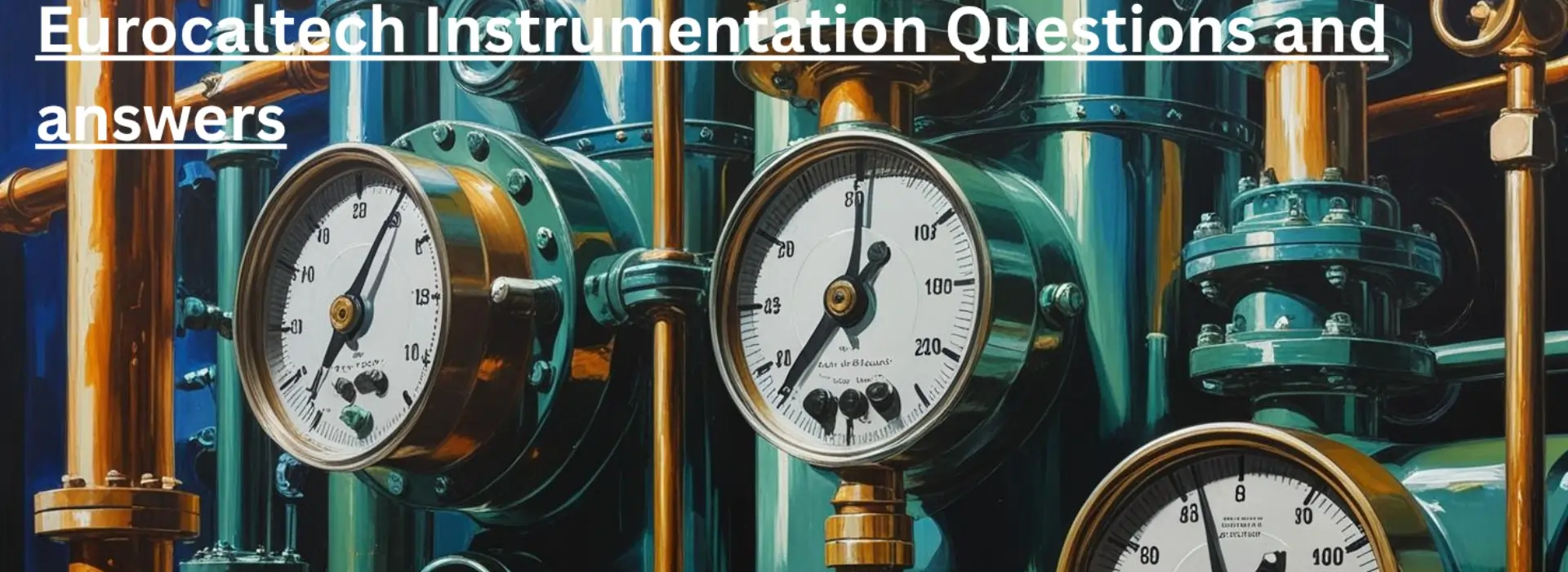
Instrumentation questions and answers level calibration UAE
How will you calibrate a leveltrol in the field?
1. First close both the
primary isolation valves and drain the liquid inside the chamber.
2. Adjust the zero to get 0%
output.
3. Connect a transparent PVC
tube to the drain point as shown in hook up.
4. Fill it to the center of
the top flange.
5. Adjust the specific
gravity or span adjustment (Electronic Level).
6. Fill it up to 50 %, check
linearity.
40. How
will you calibrate on interface level control. ?
On an interface leveltrol
there are two liquids of two different specific gravities.
1. The level will be zero when it is full of lighter liquid.
Zero % level = H X d.
H = Displacer length
d = Specific gravity of lighter liquid.
2 The level will be 100 % when it is full of heavier liquid.
100 % level = H X D.
D = Specific gravity of
heavier liquid.
Calibration with water:
1. Fill H X d level with
water adjust zero.
2. Fill H X D level with
water adjust Sp. gravity or span.
3. Check linearity.
How
will you apply wt. lest calibration to a leveltrol.
Wt. test calibration method:
- Remove the displacer from the torque arm.
- Apply equivalent weight on the torque arm that
is equal to the wt. of the displacer. Adjust zero % output.
- For Span: V = ?r2h
Loss in weight =
Wt. of float - wt. of the float immersed in liquid
Loss in weight = [wt. of float - Vol. x d]
Span wt. = (wt. of float -
Loss in wt.)
r = radius of the
displacer.
h = ht. of
displacer.
- Apply equivalent wt. equal to the (Wt. of float
- Loss in weight). Adjust Span to get 100 % out put.
- To check linearity applies average of the two
weights.
What
will happen if the displacer has fallen down while in line?
The output will be@ maximum.
What
will happen if the displacer has a hole in it while in line?
The output will be @
minimum.
What
is the used of Suppression and elevation?
Suppression and
elevation are used on Level applications where (1) transmitters are not mounted
on same level (2) Wet leg. i.e. condensable vapors are present.
What
are the limitations of leveltrol?
The limitations of a level
control that it cannot be used for lengths more than 72 inches.
How
will you commission D.P. transmitter in field in pressurized vessel.
1.
Close both the isolation valves, Vent the H.P. side.
2.
Fill it with the sealing liquid.
3.
Open the L.P. side vent valve.
4.
Adjust zero with suppression spring.
5. Close the L.P.
side vent valve.
6.
Open both the isolation valves.
47. How
will you check zero of a level D.P. transmitter while is line?
1.
Close both the isolation valves.
2.
Open the vent valve on L.P. leg and H.P. leg drain.
3.
Check and adjust zero if necessary.
.
Explain the working of an Enraf level gauge?
The Enraf precise level
gauges are based on servo powered null-balance technique. A displacer serves as
a continuous level-sensing element.
Principle:
A displacer with a relative
density higher than that of the product to be measured is suspended from a
stainless steel wire B, which is attached to a measuring drum. A two phase
servo meter controlled by a capacitive balance system winds or unwinds the measuring
wire until the tension in the weighing springs is in balance with the weight of
the displacer partly immersed in the liquid. The sensing system in principle
measures the two capacitance formed by the moving center sensing rod E provided
with two capacitor plates and the side plates. In balance position the
capacitances are of equal value. Level variations will a difference in buoyancy
of the displacer. The center sensing rod will move in the direction of one of
the side capacitor plates. This causes a difference in value of these
capacitances. By an electronic circuit this change is detected and integrated.
During the rotation of the servomotor the cam driven transmitter continuously
change the voltage pattern to a remote indicator of which the receiver motor
drives a counter indicating level variation.




